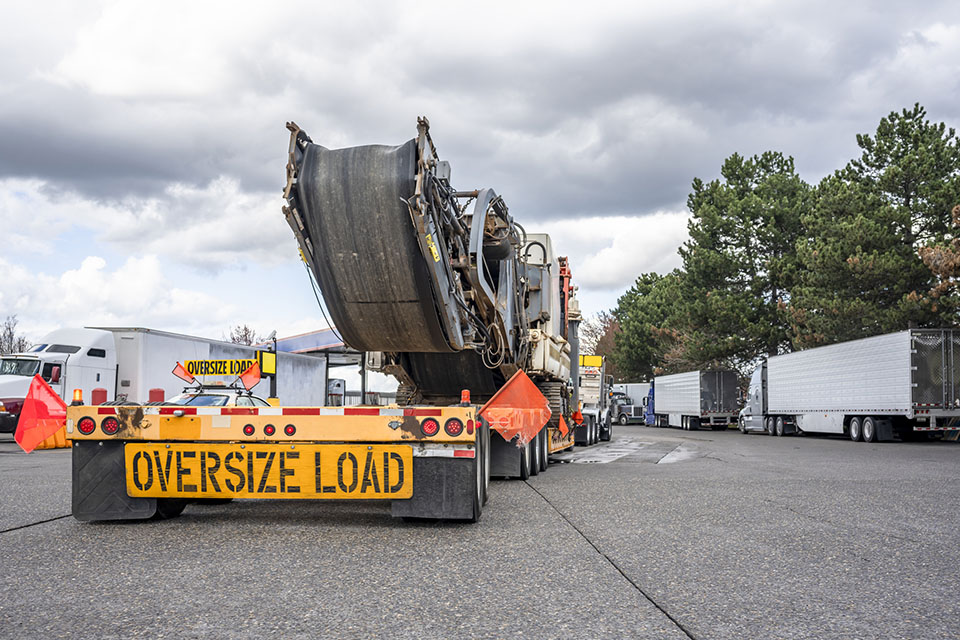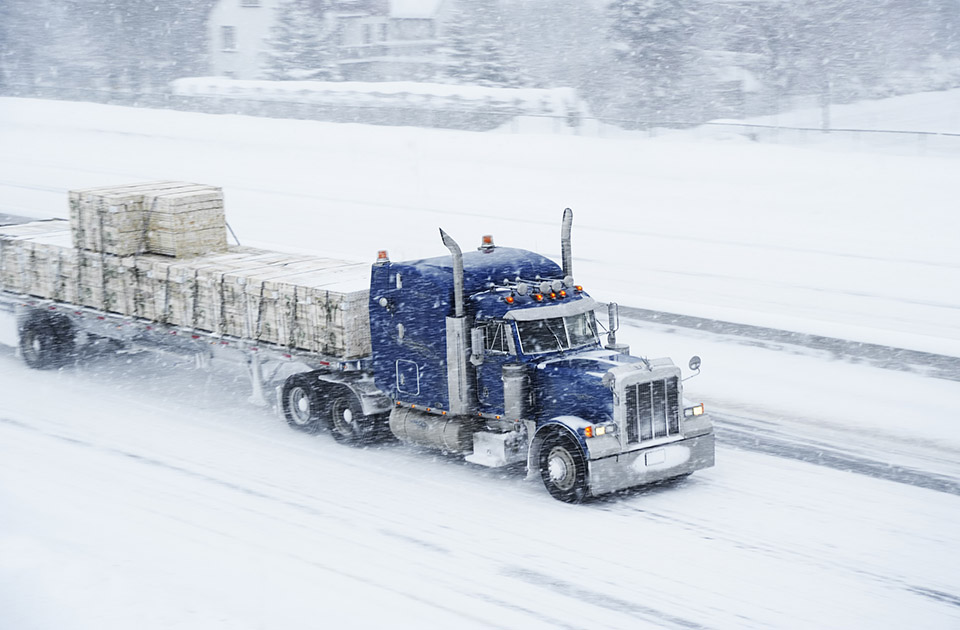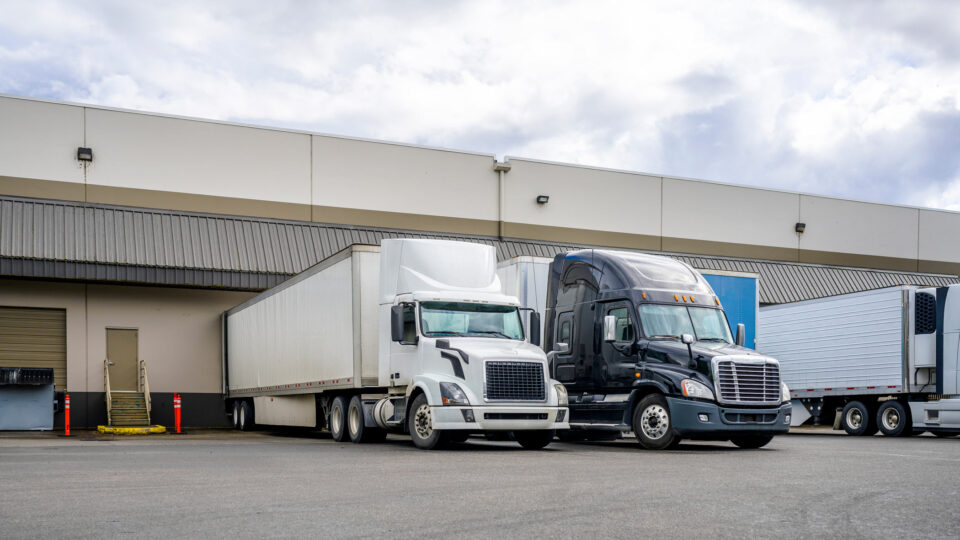Posted On May 15, 2023
Truckload transportation is a competitive and cost-effective method when dispatching large shipments of goods. However, it’s not as simple as just loading up a trailer. Before your cargo hits the open road, you need to know some crucial dos and don’ts of truckload shipping. Trust us, you don’t want to learn these lessons the hard way.
Keep reading to find out what you need to know about truckload shipping and gain valuable insights to make your next shipment successful.
What is considered a full truckload shipment?
Truckload shipping (TL), or full truckload shipping (FTL), is a shipping method in which an entire truck is dedicated to a single shipment. It’s typically used for transporting large quantities of goods or cargo, high-value shipments or time-sensitive deliveries. Unlike less-than-truckload (LTL) shipping, FTL is usually faster and more secure since loads aren’t transferred, consolidated or frequently moved as other shipments are loaded and unloaded.
The different trailer types in truckload shipping
Several kinds of trailers are used in truckload freight shipping services, each designed for a specific type of cargo.
- Dry van trailers are most commonly used to transport dry goods such as boxed or palletized freight.
- Reefer or refrigerated trucks carry perishable goods, such as food and pharmaceuticals, that require temperature-controlled environments.
- Flatbed trailers haul oversized and overweight cargo such as construction equipment and heavy machinery.
- Specialized trailers are intended for moving specific types of freight, such as tanker trailers for liquids and gases and auto transport trailers for vehicles.
What’s the difference between less-than-truckload and full truckload freight?
Less-than-truckload shipping is used when a freight order only fills part of the truck. So multiple customer orders are transferred and consolidated to fill up the remaining space in the trailer. LTL shipping is usually cheaper than full truckload shipping, but often takes longer since it involves multiple stops.
(Want to know more about LTL? Read LTL Freight Management: 7 Tricks for Saving Time & Money.)
The “dos” of truckload shipping
When sending your goods by full truckload shipping, specific considerations can help ensure a smooth and hassle-free process. One of the most crucial things to keep in mind when it comes to your full truckload shipments is preparation.
Thoroughly prepare for your shipments
When arranging a truckload service, you should always provide several key pieces of information to your carrier. Here is a handy checklist:
- Pickup date and time
- Pickup location city, state and ZIP code
- Pickup contact info
- Delivery date and time
- Delivery location city, state and ZIP code
- Delivery contact info
- Commodity – provide a detailed description of the goods that you are shipping.
- Pallet count
- Pallet dimensions – LxWxH
- Stackable or not?
- Total weight
- Equipment needed
- Additional requirements — Let the carrier know in advance if you have any special needs for your shipment, such as shipping/delivery apps, call-ahead service or liftgates.
Not providing accurate information to your carrier can have serious consequences. For instance, if you don’t give the carrier the correct freight weight and dimensions, they may not bring the appropriate equipment to transport your shipment, resulting in delays or additional charges.

Select the right equipment
Understanding the differences between trailer types and their roles is crucial. You don’t want to end up with a trailer that’s too small for your cargo.
So, first things first—analyze your cargo in detail. How big is it? How much does it weigh? You also need to consider your cargo’s fragility and chemical characteristics.
Not selecting the right trailer type for your cargo can have consequences. Let’s say you need to transport a large piece of machinery, but you choose a too-small trailer. During transit, the machinery could shift or become damaged because it’s not adequately secured. This could lead to costly repairs or even needing to replace the machinery entirely.
Or, let’s say you’re shipping hazardous materials in a trailer that doesn’t meet safety regulations. If there’s an accident or spill, not only could it cause harm to people and the environment, but you could also face legal consequences and fines.
Keep your supply chain moving—sign up for the 2 Minutes Flat newsletter.
Communicate with the carrier
If you want to ensure a hassle-free transportation experience, you need to communicate with your carrier to make sure you’re on the same page. Don’t assume they know everything. If you have any special requests or requirements, communicate them in advance to avoid delays, damages and extra charges. Remember, a simple chat goes a long way.
Use technology for tracking and communication
You don’t want to be in the dark about your cargo’s whereabouts. Technology has revolutionized the supply chain by providing real-time tracking and communication tools. With a transportation management system (TMS) like Flat World’s Pipeline software, shippers can track their cargo in real time, receive status updates and communicate with the carrier. This improves visibility and reduces the risk of delays or miscommunications.
Stay flexible and adaptable
Shipping can be a wild ride, and even if you plan everything to a tee, anything can happen on the road. Supply chain disruptions are not a matter of “if” but “when,” and unforeseen circumstances are just a part of the game. Maybe there’s a traffic jam or a freak snowstorm that shuts everything down—flexibility and adaptability can help you mitigate the impact.
Rather than throwing your hands up in frustration, be open to carrier suggestions for an alternative route or delivery time. Having a backup plan in place from the beginning never hurts.
Partner with a broker to leverage relationships and expertise
Truckload shippers often find themselves spending countless hours sifting through carrier options, negotiating rates and handling complicated logistics to move their products. Engaging with a broker and logistics partner (more specifically, the right broker and logistics partner) can free up that time for shippers to focus their attention on what’s more important.
With established carrier relationships and in-depth knowledge of load requirements, a third-party logistics company can offer you a customized shipping solution that meets your unique needs. And the best part? Brokers can save you both time and money.
Many brokers can support all aspects of a shipment, from carrier selection and paperwork to tracking. Look for a third-party logistics company with plenty of relevant industry experience (or experience shipping goods similar to yours), to ensure they understand the specifics of the load and can help you avoid common pitfalls like damage and delays. It’s the smartest way to streamline your shipping process.

The “don’ts” of truckload shipping
FTL shipping is an effective way to transport products—as long as you avoid making these mistakes.
Don’t forget the details for hot freight
When shipping “hot,” time-sensitive truckload freight, it’s important to remember how a driver’s electronic log device (ELD) can affect your delivery time. ELDs limit drivers to 11 hours of driving time in a 14-hour period. This means drivers must carefully plan their routes and stops to ensure their freight is delivered on time. So if there is a four-hour delay at the distribution center, the driver’s allowable driving time is reduced. That idle time can add up quickly and push out the arrival time to the final destination.
This is why planning is crucial. Drivers shouldn’t be rushed or expected to drive longer if a shipment isn’t ready or an appointment isn’t honored. Shippers should be aware of the route distance and carrier’s operating limitations to ensure the successful delivery of hot freight.
Don’t focus solely on price
We all love a good deal, but sometimes you get what you pay for. Don’t let your shipment get underbid and then left sitting. That’s a recipe for disaster. In some cases, you might have to arrange for expedited shipping at a higher cost to compensate for the lost time.
While price is a significant consideration when choosing a carrier, focusing solely on price can also result in working with a carrier that doesn’t meet your safety, reliability and quality standards. Considering other factors like carrier reputation, customer service and experience is worthwhile.
Don’t ignore carrier safety records
Safety should always be a top priority in logistics. Before you choose a carrier, take a look at their safety record. You can find detailed information about truckload carriers on the Department of Transportation’s Federal Motor Carrier Safety Administration (FMCSA) website. A safety history report will tell you about any past accidents or violations the company has had. Researching a carrier in advance will help you ensure the safety of your goods.
Don’t overlook the impact of the weather
Mother Nature can be unpredictable. Winter storms, flooding and even wind can delay your delivery or damage your goods. Make sure you’re aware of any potential weather or road conditions that could affect your shipment and plan accordingly. For instance, if you know a winter storm is coming up north, you can plan to ship your goods a few days before the storm hits, or reroute it to a state further south.
Level up your truckload shipments
Truckload shipping isn’t rocket science, but it does require careful planning and attention to detail. From optimizing your strategy to choosing the right truckload carrier, each step in the process plays a vital role in ensuring a successful shipment. By following these tips, you’ll be well on your way to ensuring your goods arrive on time, but most importantly, with minimal headaches.
And if you’re looking for a partner to help you master truckload shipping, reach out to our team.

